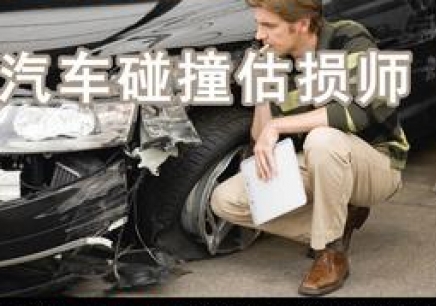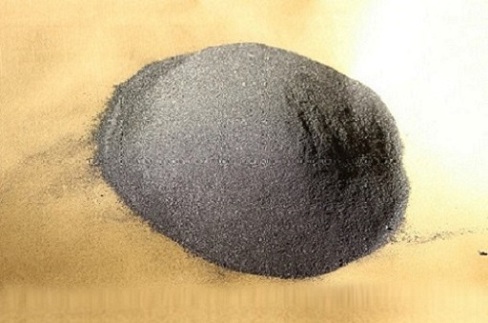The accident investigation is one of the tasks of the automobile appraisers and often requires preliminary or in-depth appraisal of the accident vehicles. The depth of the appraisal requires the use of special tools and instruments for thorough exploration and accurate analysis, but also to follow professional ethics. After all, some seriously damaged cars will be more complicated to identify, and they can be accurately identified according to the bylaws. Assessor's Common Tools Tools for recording information: There are pencils, notebooks, recording equipment or directly recorded on laptops and other devices. Check the manuals and software for the accessory information: This can be an original accessory manual, a third-party manual, or an evaluation software of a professional software company to check the accessory information and critical vehicle conditions. Necessary measuring tools: steel tape measure and gauge. Lifting equipment: Evaluated personnel should be able to operate lifts or jacks on their own to perform correct lifting operations on the vehicle. For more serious collisions, the vehicle should generally be lifted to inspect the underbody. Commonly used manual tools: Evaluated personnel should be able to use familiar tools such as wrenches, screw drivers, and pliers. When assessing the damage, it is usually necessary to disassemble some of the damaged parts for further inspection, so these tools need to be used frequently. Assessor identifies vehicle damage steps To identify a car, in addition to the necessary tools, the assessors should also have a scientific method of damage inspection, which is especially important for cars with serious damage. The method divides the car into five locations according to the collision damage rule: a zone that is directly affected by a collision, that is, a direct injury site; a second zone, and other body parts that are indirectly damaged; three zones, mechanical parts, including damaged Mechanical parts such as power trains and accessories; four-zone, crew compartment, including damaged interiors, lights, accessories, control devices, and paint finishes in the passenger compartment; five zones, exterior body parts, and trim parts. In the assessment of the accident vehicle, it should be carefully examined one by one from one location to another, and the damage of the vehicle should be recorded in sequence. Of course, whether you use location inspection or other methods, you should follow the following sequence when you check the accident car: 1. From front to back: Check from the front of the car to the rear, but for back-end collisions, check from back to front. 2, from the outside to the inside: First check the external parts of the damage, such as decorative pieces: Then check the damage of internal structural parts and connectors. 3, from the main to the second: first check the main sub-assembly damage, and then view the damage of small devices and other accessories. This is the work statute of an automobile appraiser. Although it is not an appraisal division, it can be used for maintenance, district maintenance, or you may not have to worry about being overlooked.
Natural Graphite, as its name implies, is naturally formed by natural graphite, which is generally found in graphite schist, graphite-gneiss, graphite-bearing schist and metamorphic shale.
Features
The chemical composition of graphite is carbon (C). Naturally produced graphite is rarely pure and often contains impurities, including SiO2, Al2O3, MgO, CaO, P2O5, CuO, V2O5, H2O, S, FeO and H, N, CO2, CH4, NH3, etc. Natural graphite minerals are black, steel gray, striated black; Metallic luster, crypto, dull, opaque; The hardness is isotropic, the vertical cleavage surface is 3 ~ 5, the parallel cleavage surface is 1 ~ 2; Qualitative soft, density is 2.09 ~ 2.23 g/cm3, have the feeling of greasy, easy to contaminate finger. Mineral chip under the transmitted light is generally not transparent, extremely thin can pervious to light, the light green gray, refractive index of 1.93 ~ 2.07, under the reflected light is light gray, reflective pleochroism, Ro gray with brown, Re dark blue gray, reflectivity Ro23 (red), Re5.5 (red), the reflected color, double reflection were significantly, strong heterogeneity, polarization color for straw yellow.
Graphite is a complex six-party double cone, assumes the six-party tabular crystal, common simplex are parallel double, six-party double cone, hexagonal prism, but in good condition with rare crystal forms, the generally show scaly or platy, aggregate density lump, earthy or globular.
Type
The process performance and usage of graphite is mainly depends on the degree of crystallization, in accordance with its natural graphite crystal morphology can be divided into crystalline graphite, Flake Graphite) and aphanitic graphite (earthy graphite) two types of industry.
Crystalline graphite
In the crystalline (scale) graphite ore, the diameter of graphite crystals is greater than 1 mu m. Ore grade is low, but optional; The mineral associated with graphite is usually mica, feldspar, quartz, diopathic stone, diabase, garnet and a small amount of pyrite, calcite, etc., some of which have some useful components, such as rutile and vanadium. The ore is scales, grainy scales or granulocyte structures, flaky, flaky, or blocky structures.
Crystalline (scale) graphite is divided into High Purity Graphite, high carbon graphite, medium carbon graphite and low carbon graphite according to the fixed carbon content.
The high purity graphite (fixed carbon content is greater than or equal to 99.9%) is mainly used for flexible graphite sealing material, nuclear graphite, instead of platinum crucible for chemical reagent melting and lubricant base material, etc.
High carbon graphite (fixed carbon content 94.0% ~ 99.9%) is mainly used for refractory materials, lubricant substrate, brush raw materials, carbon products, battery raw materials, pencil materials, filling materials and coatings, etc.
Carbon graphite (80% ~ 94% fixed carbon content) is mainly used for crucible, refractories, casting materials, foundry coatings, pencil raw materials, battery materials and dyes, etc.
Low carbon graphite (fixed carbon content 50.0% ~ 80.0%) is mainly used for foundry coatings.
Cryptocrystalline graphite
Cryptocrystalline graphite is also called soil graphite or amorphous graphite. In cryptocrystalline graphite ore, graphite crystals are less than 1 mu m in diameter, which are microcrystalline and can only be seen in the electron microscope. High grade of ore, but poor selectable; The mineral associated with graphite is often quartz and calcite; The ore is microscaly - cryptocrystalline structure, block or soil structure.
Cryptocrystalline graphite ore is mainly distributed in contact metamorphic deposits. Actually the diameter graphite flake graphite ore is uneven, the so-called crystalline graphite ore, may also contain the aphanitic graphite, are too many content is often referred to as the mixed type graphite ore, may also contain a small amount of aphanitic graphite quality mineral crystalline flake graphite piece diameter slightly larger than 1 microns.
Cryptocrystalline graphite ore is mainly used in pencil, battery, electrode, graphite emulsion, graphite bearing ingredients and the raw materials of battery carbon rod. The non-ferrous graphite is mainly used for casting materials, refractory materials, dyes and electrode paste.
Natural Graphite,Expanded Graphite,Colloidal Graphite,Special Graphite Fengcheng Ruixing Carbon Products Co., Ltd , https://www.lnfcrxts.com
